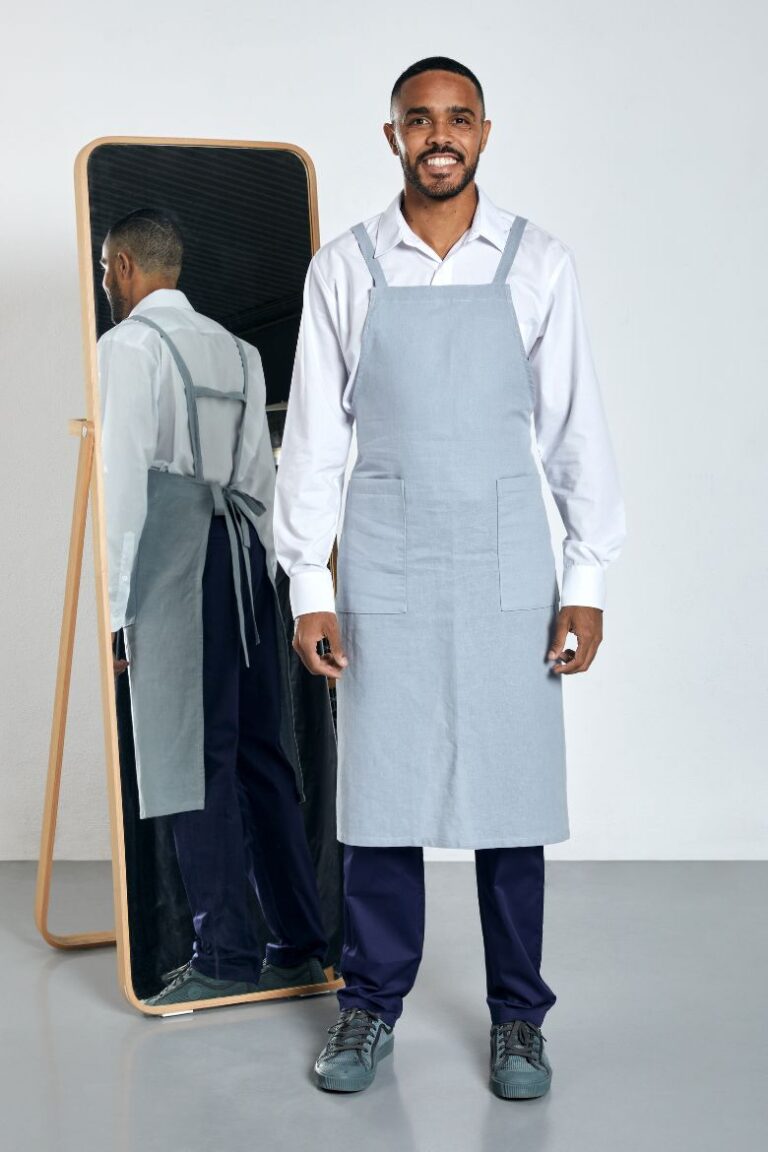
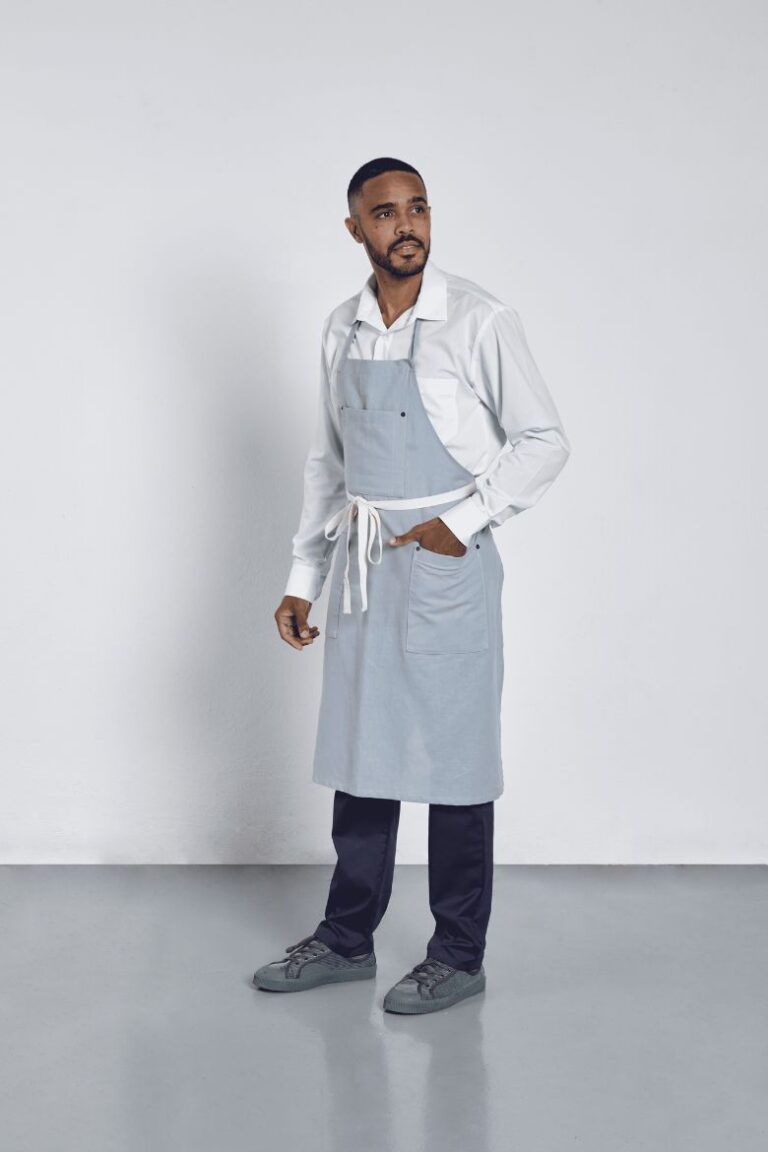
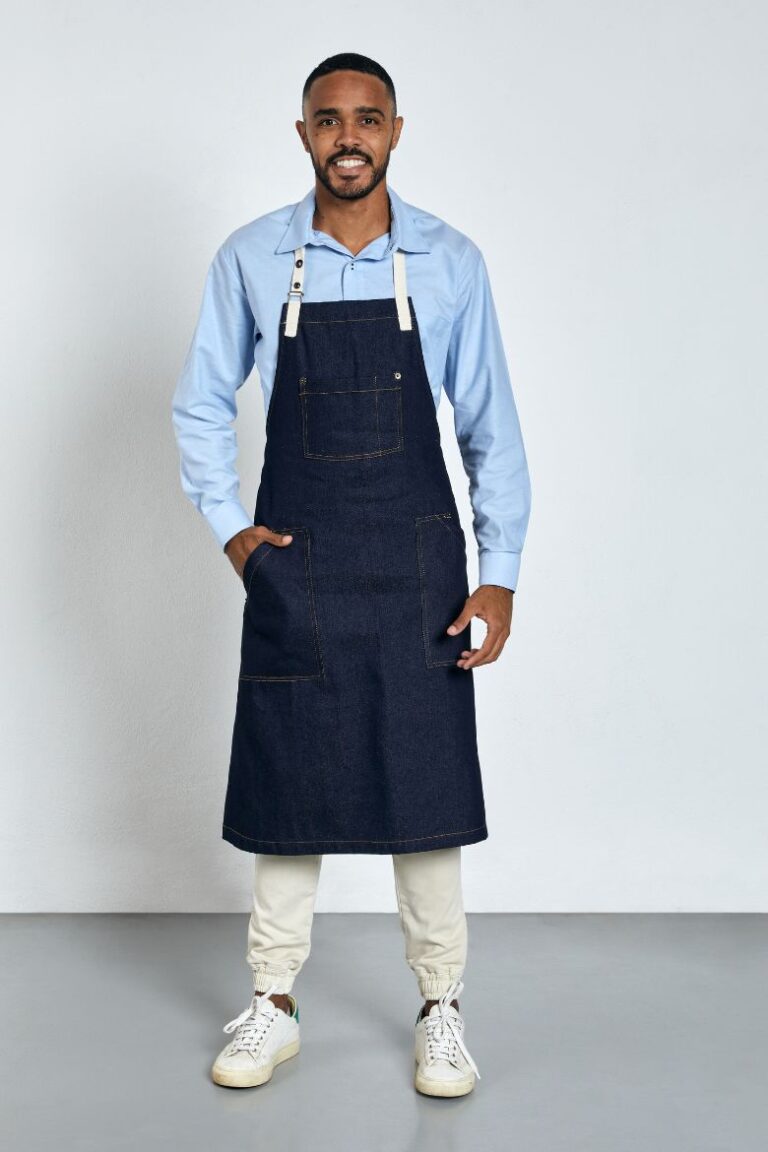
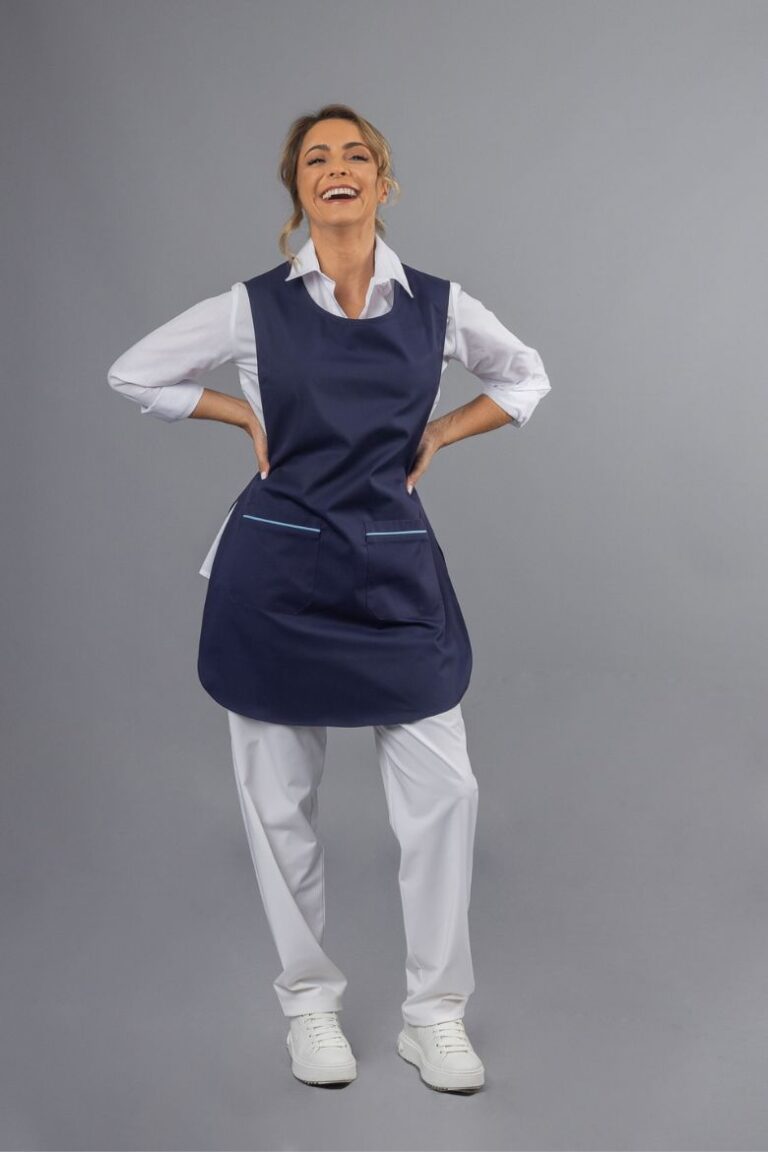
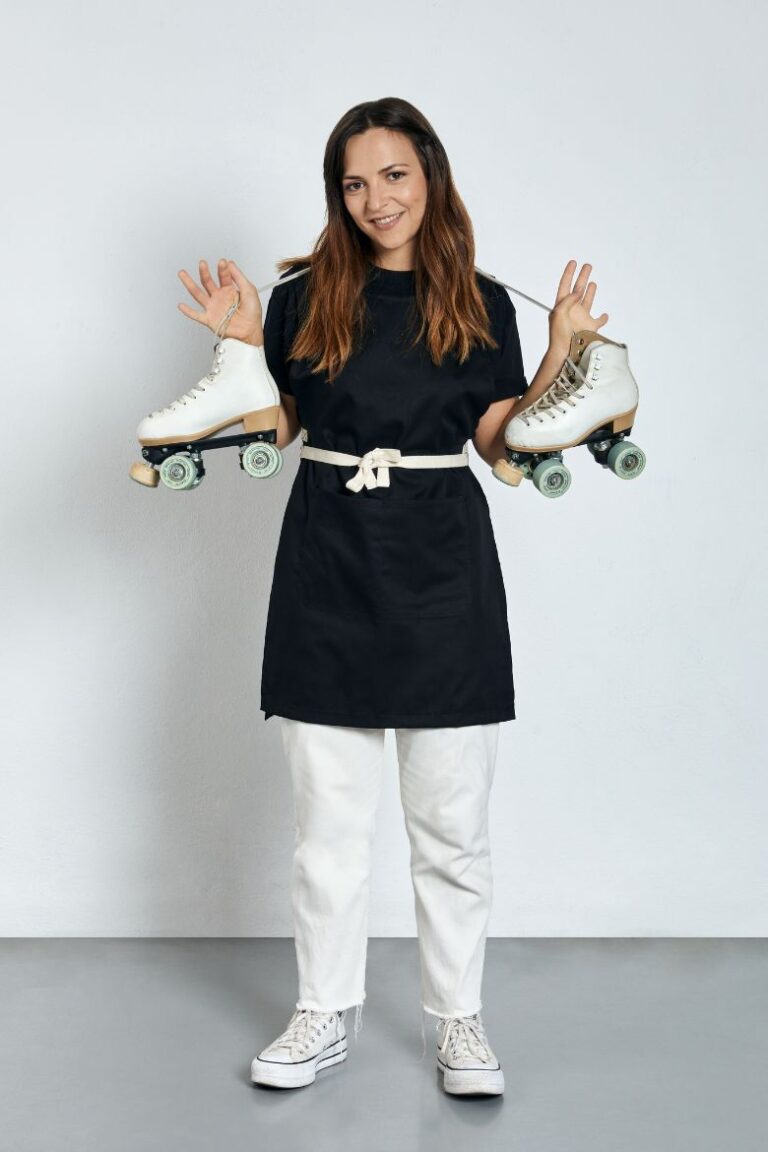
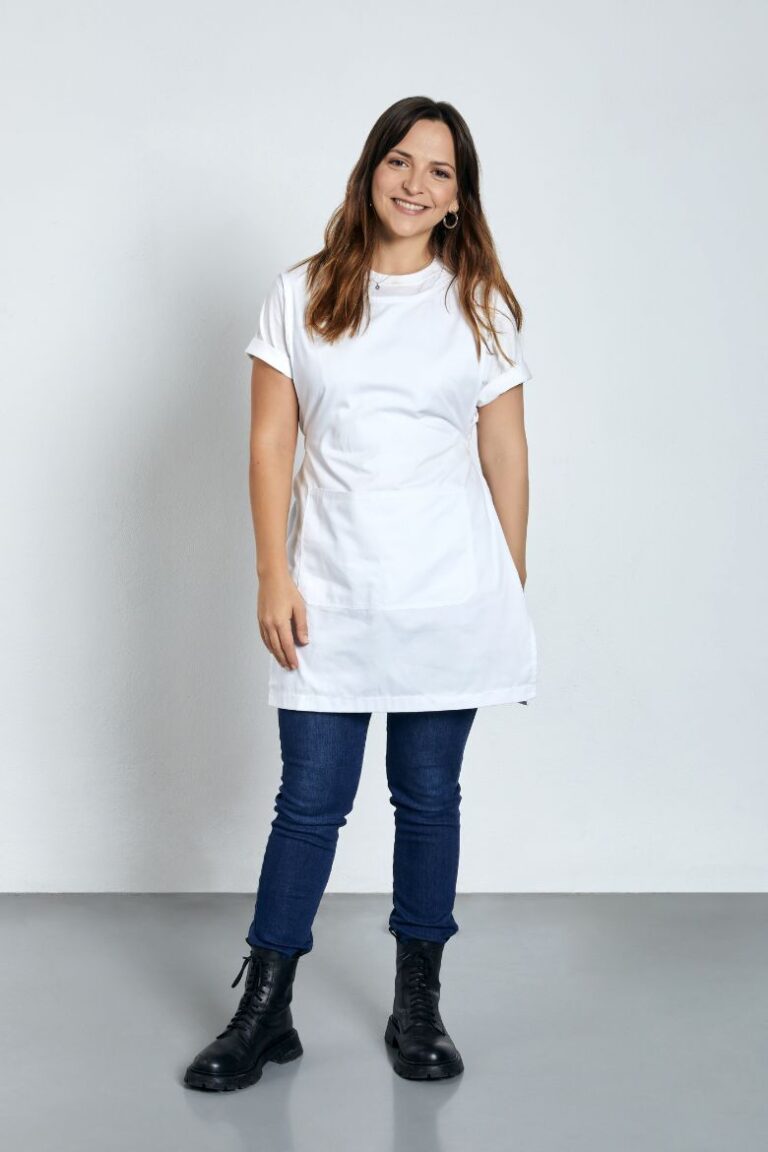
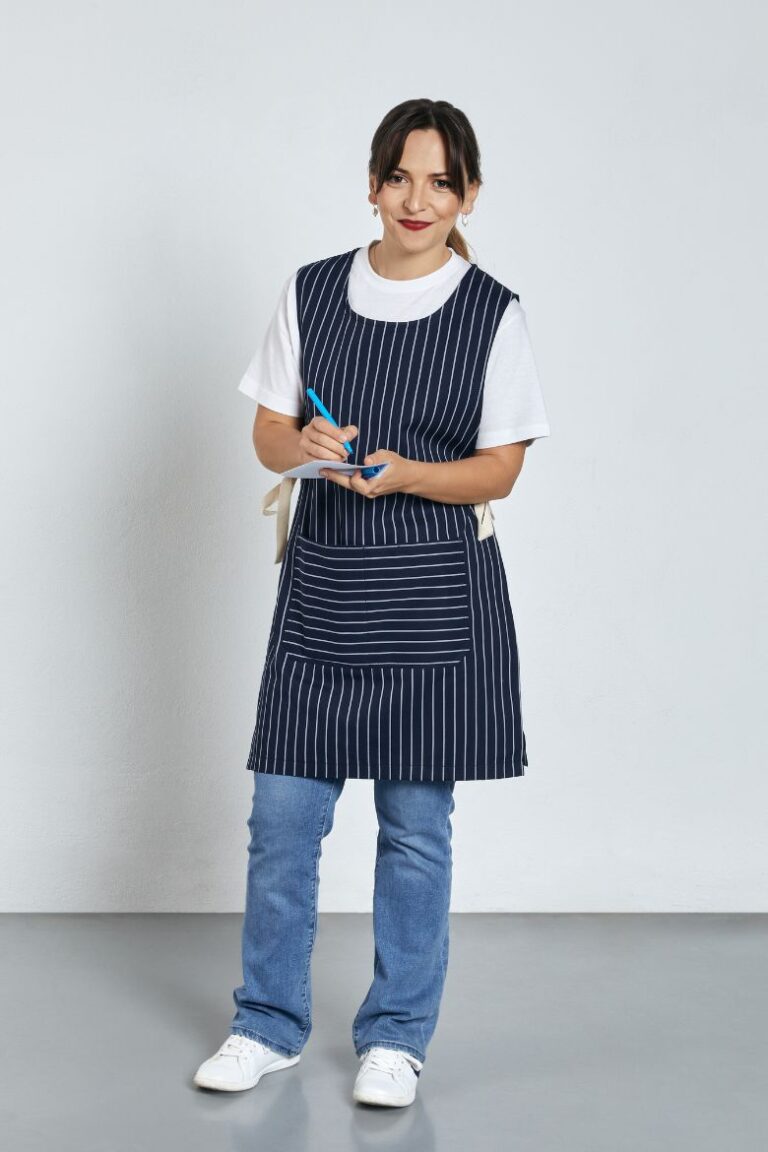
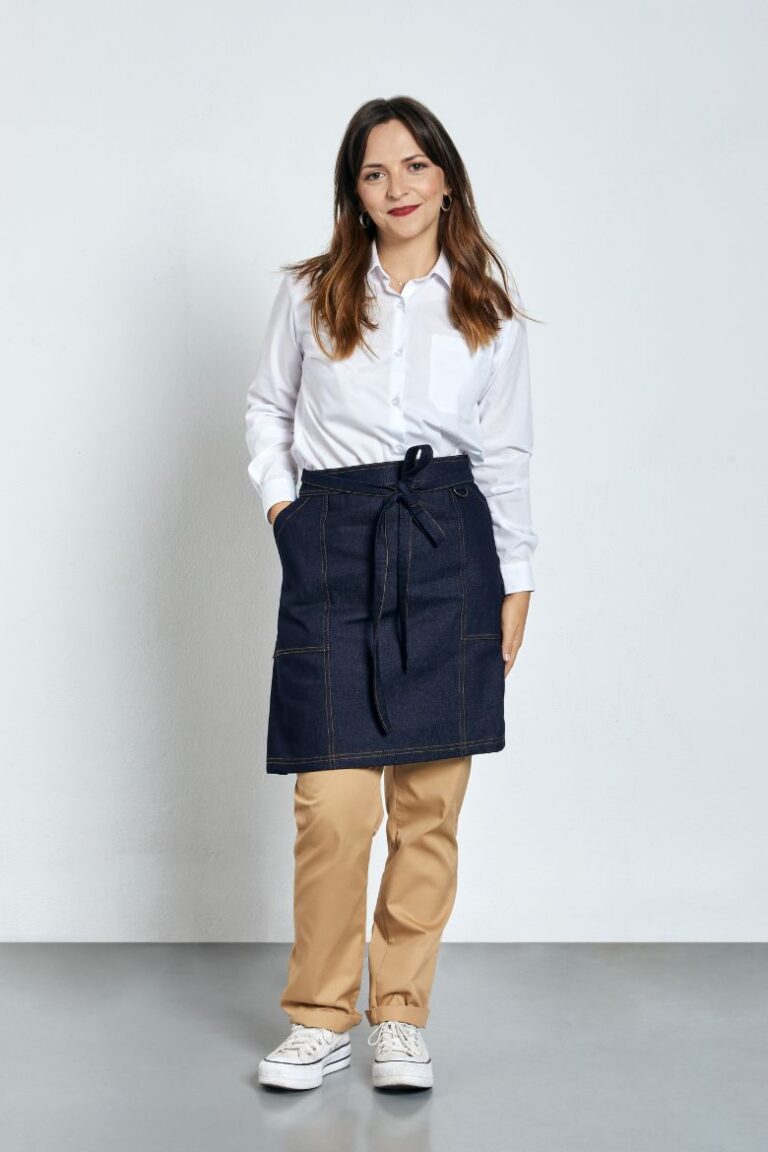
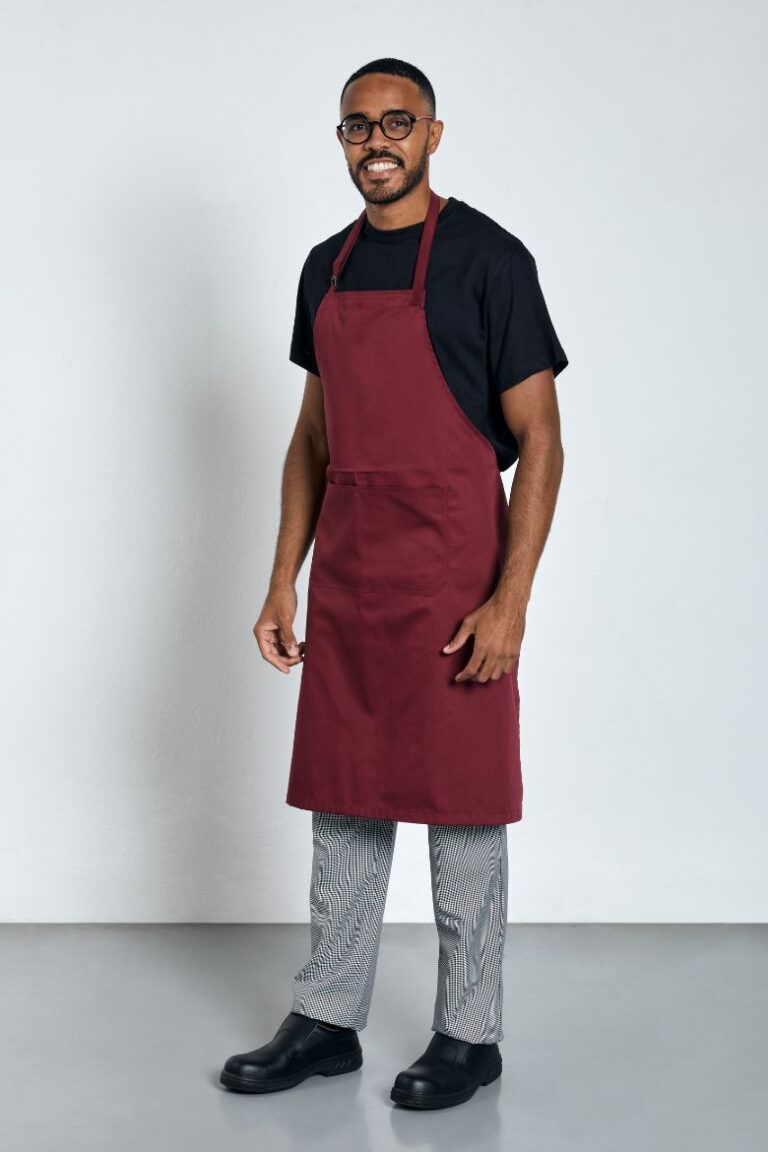
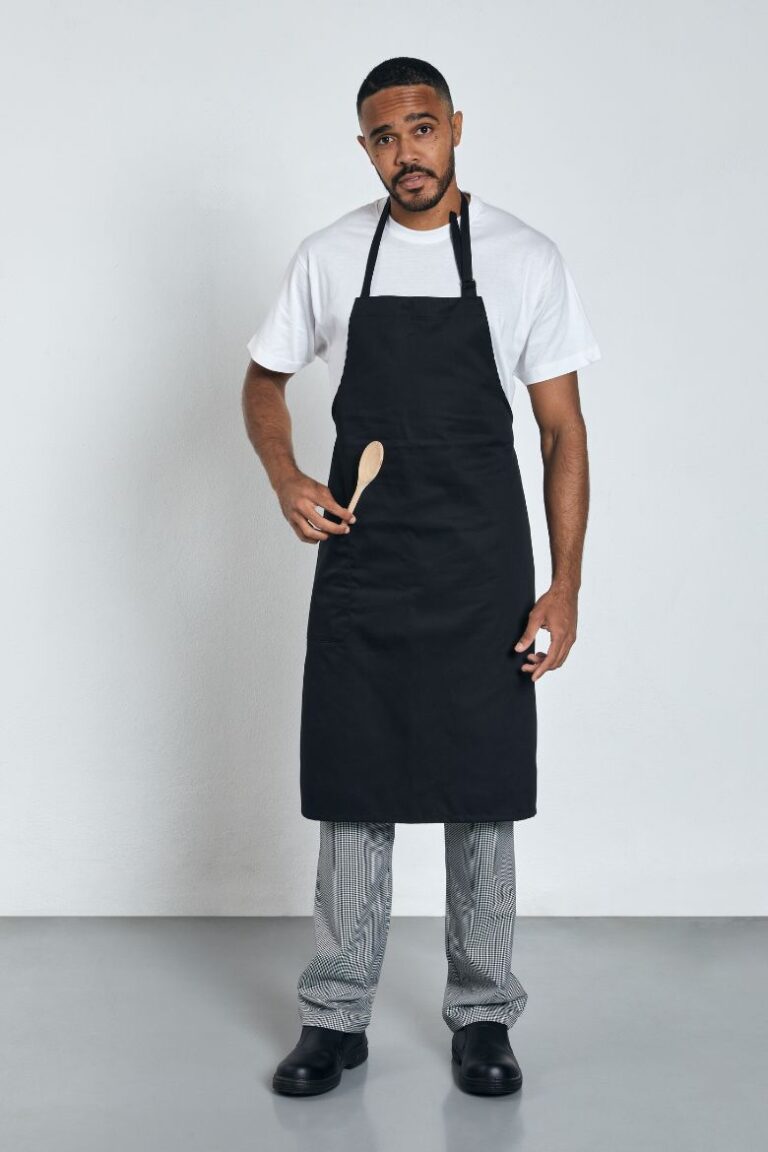
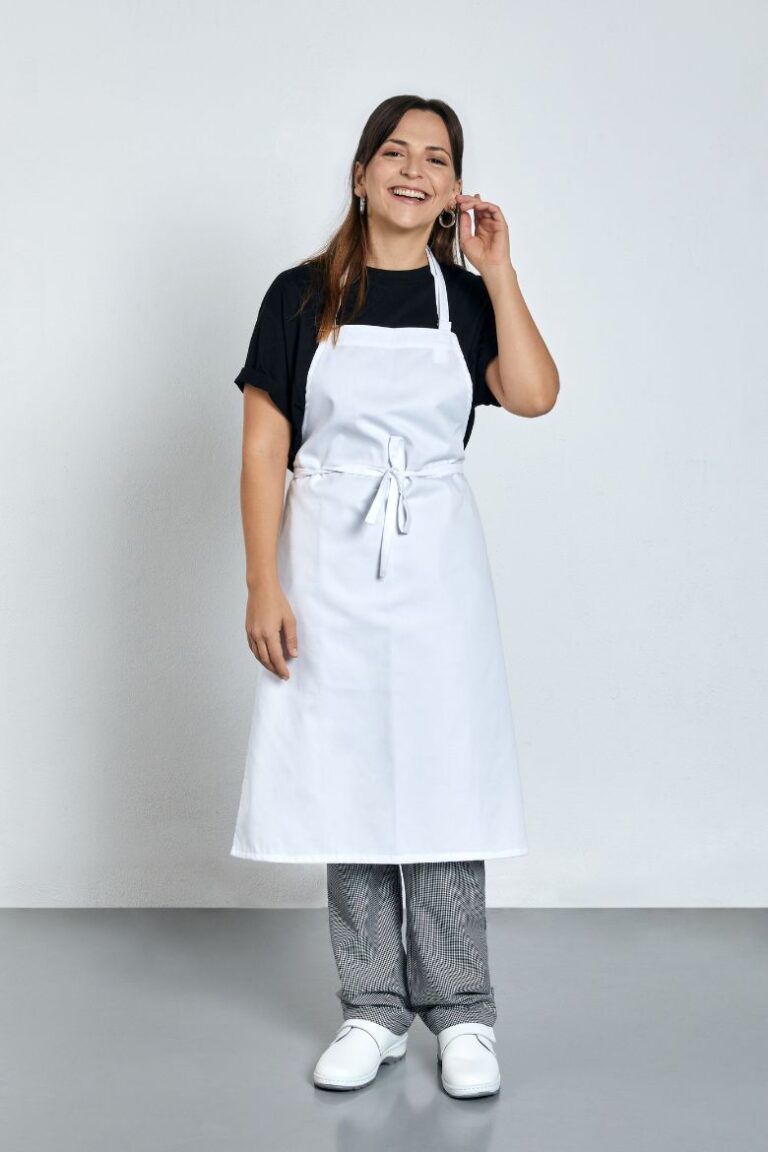
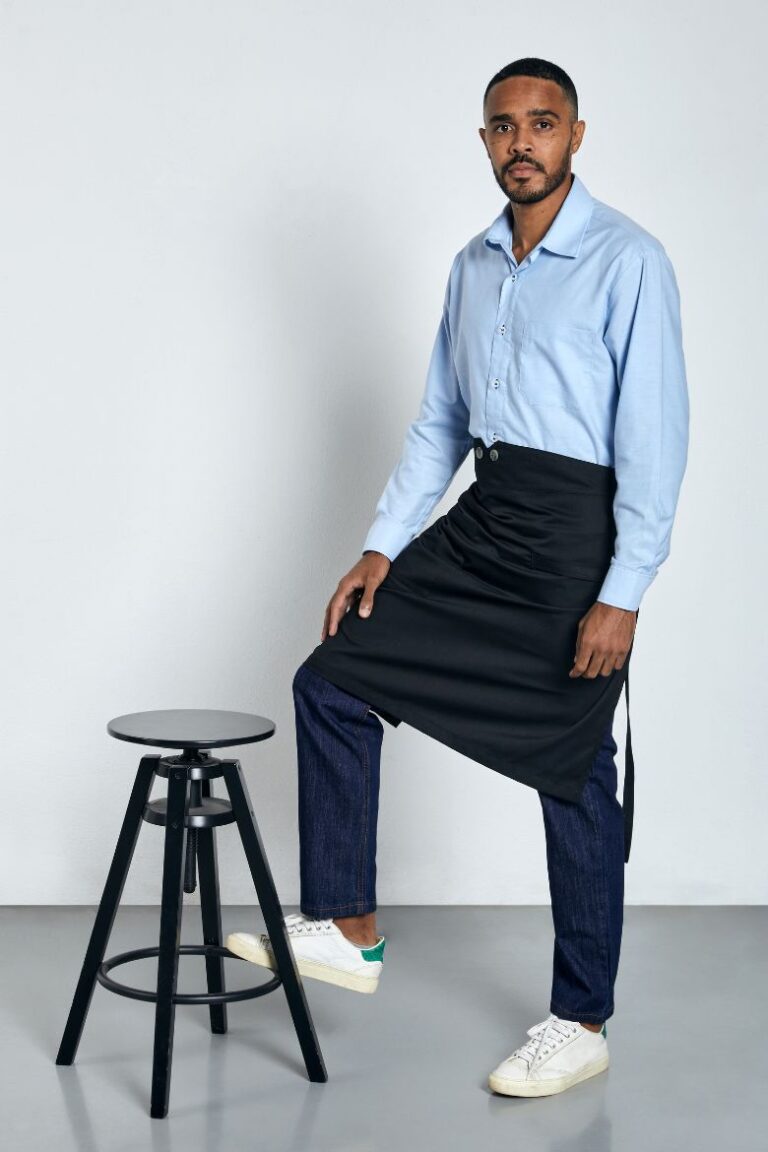
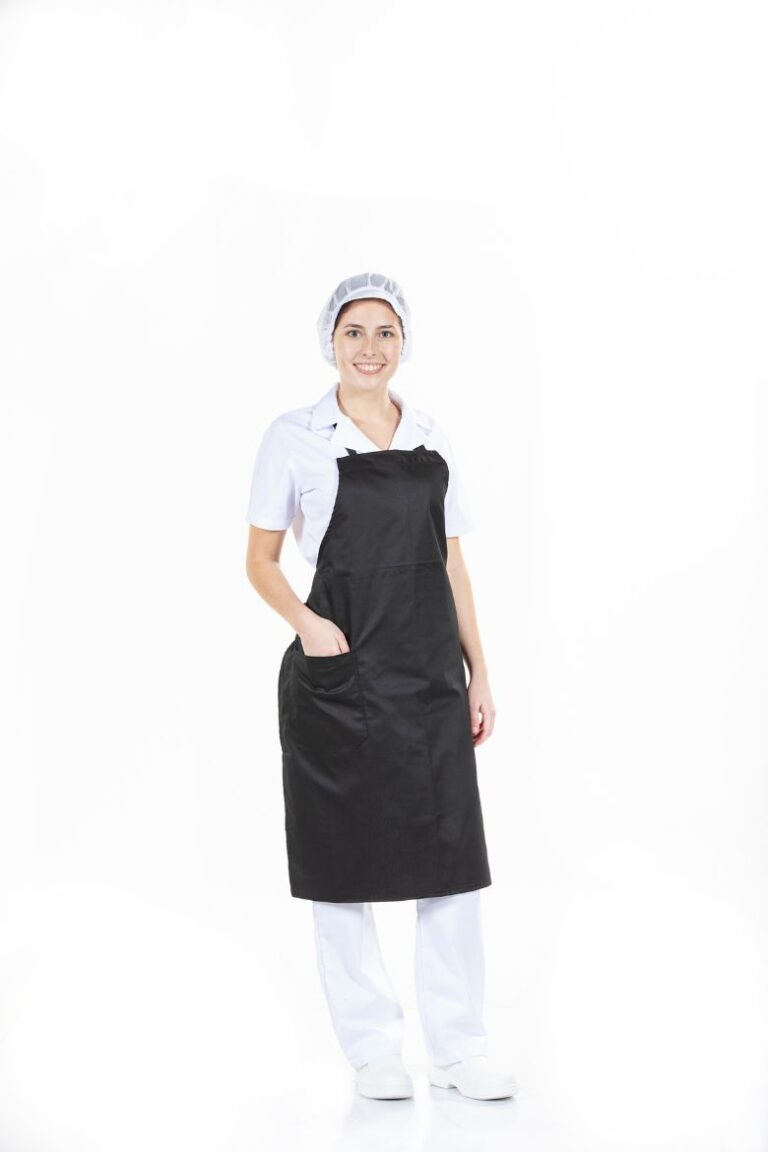
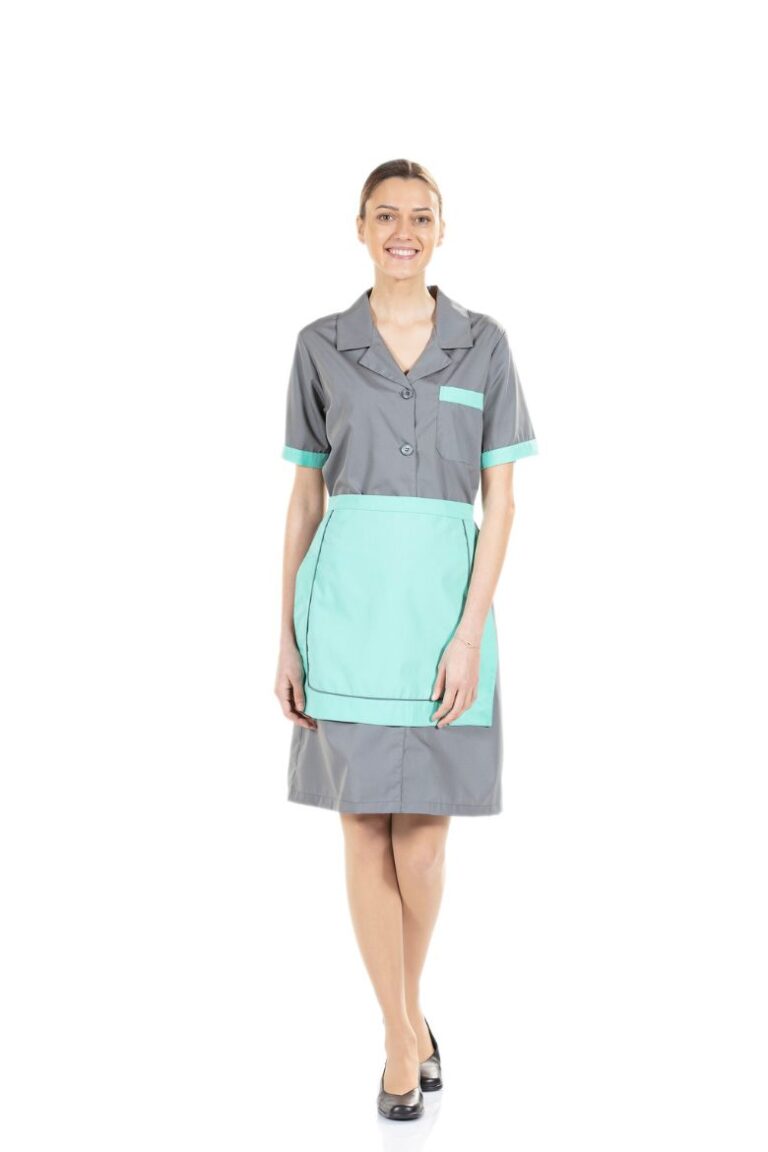
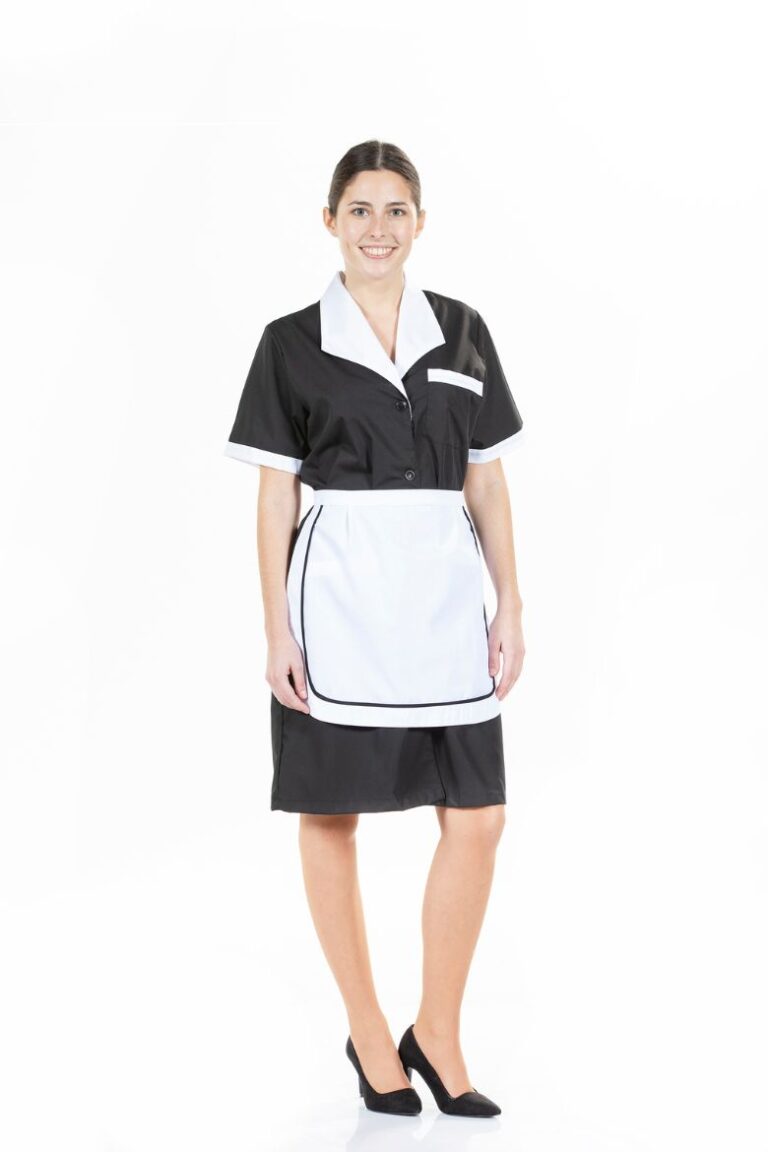
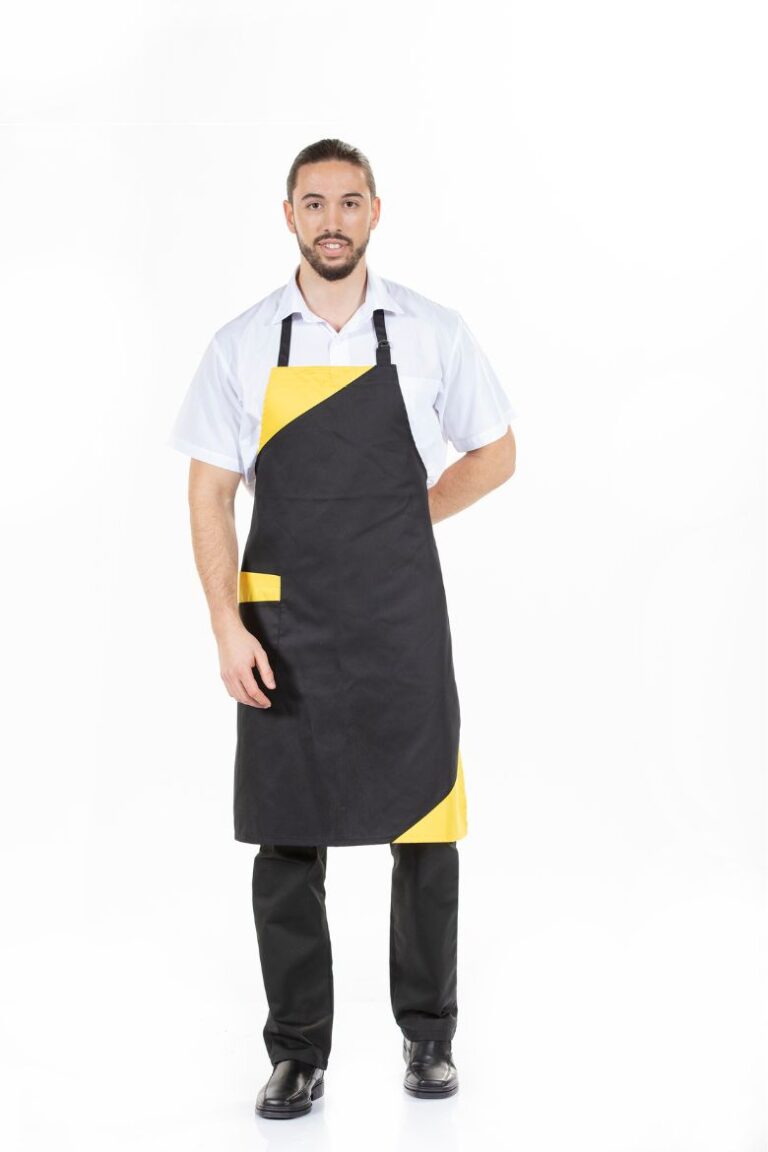
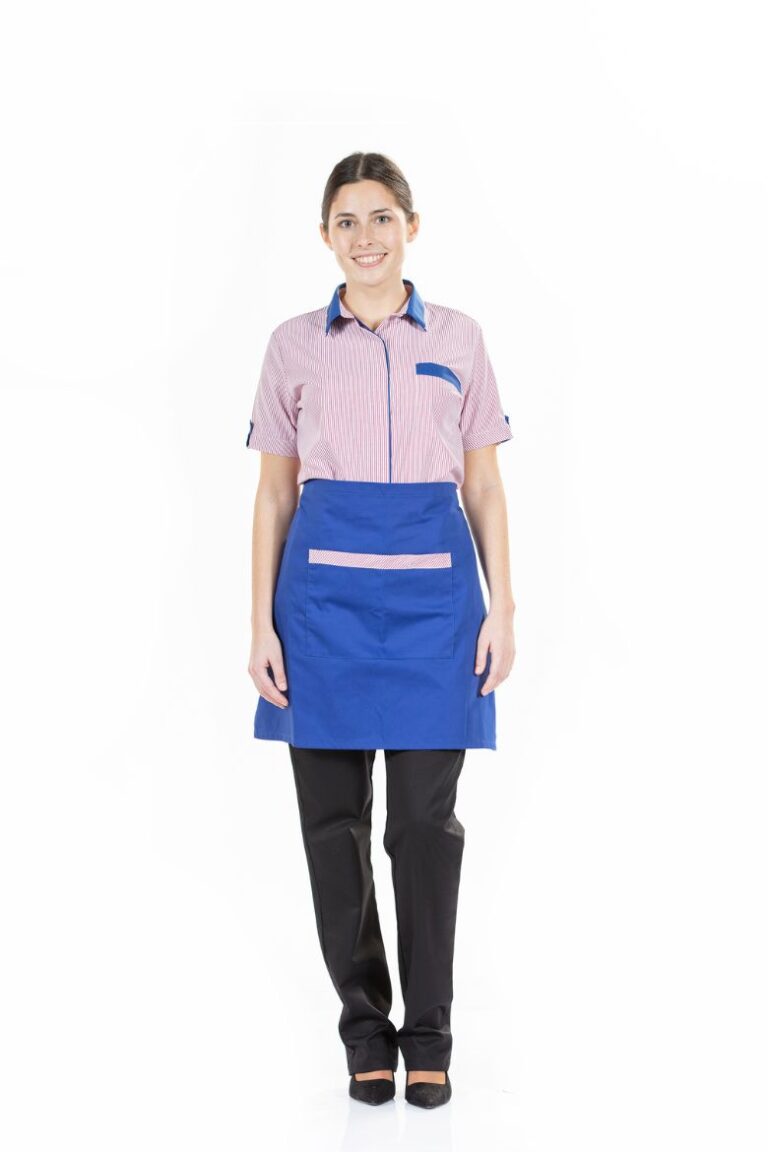
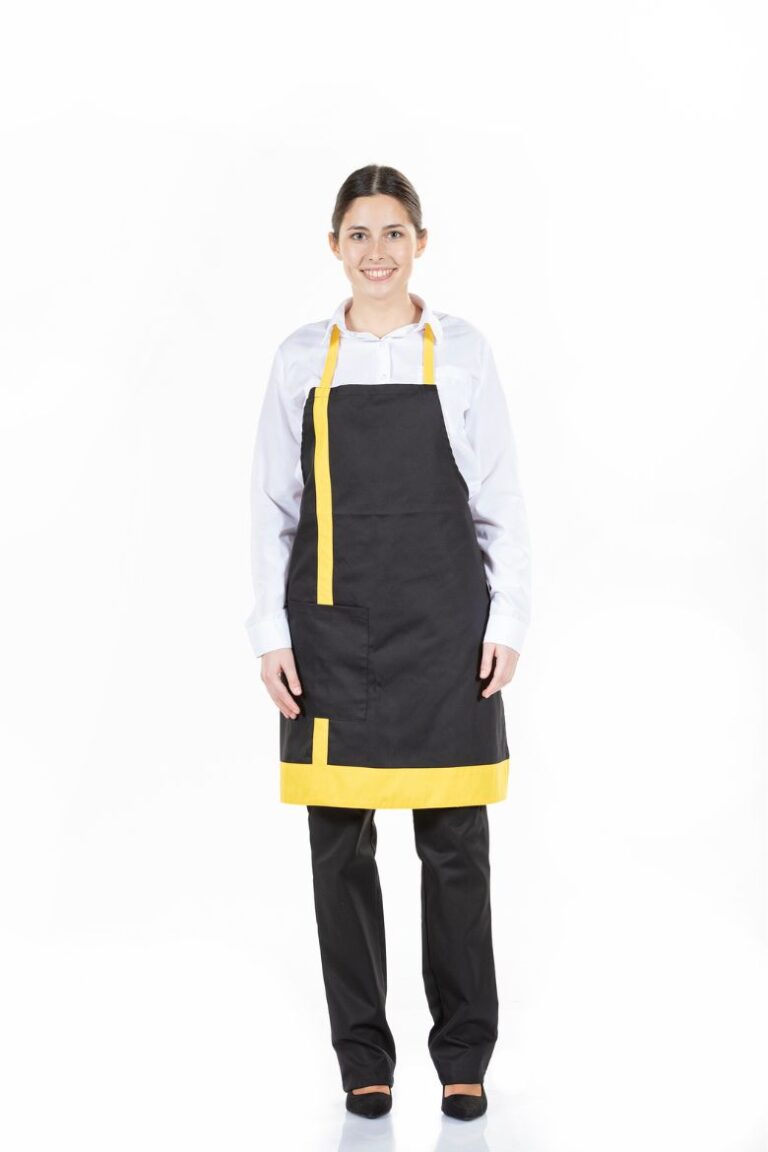
Products with visible prices are those that can be purchased immediately, online, without requiring minimum purchase quantities. This means you can explore our variety of options and purchase exactly what you need, with complete transparency regarding costs and the Professional Apparel model. On the other hand, products without a listed price function as a portfolio of possibilities. These items are highly customizable and can be tailored to each customer's individual specifications. To ensure quality and meet expectations, these products have a minimum order quantity and are subject to a custom quote process.
There are several types of kitchen aprons, each with specific characteristics and uses. Here are some of the main types of kitchen aprons and what they are used for: • Waist aprons: As the name suggests, these aprons only cover the user's waist and are often used by bartenders, as they allow for greater arm mobility. They are ideal for serving drinks but can be used for other tasks that do not involve handling food. • Bib aprons or server aprons: Also called serving aprons, they cover the user's chest and part of the abdomen. They are generally used by servers to carry dishes, cutlery, and other service items. Some models include pockets for storing objects. • Waist aprons with a bib: These are aprons that cover the waist and have a strap that extends upwards, covering the chest and shoulders. They are ideal for those who need more protection when handling food or liquids, as they protect the chest and upper body. They are used by chefs and cooks. • Full-body aprons: These cover the entire body of the user, including the chest, abdomen, legs, and feet. They are ideal for protecting the user from splashes of food and liquids and are often used in professional kitchens. They can be made from durable and easy-to-clean materials.
The best fabric for kitchen aprons is one that is durable, easy to clean, and resistant to stains and liquids. Some popular options include: Cotton: A breathable and comfortable fabric that absorbs moisture well and is easy to wash. The downside is that it can shrink after washing. Polyester: A fabric that is stain and moisture resistant, easy to clean, and durable. However, it may not be as breathable as cotton. Nylon: A fabric that is resistant to stains and liquids, lightweight, and easy to dry. However, it may not be as breathable as other fabrics. Leather: A fabric that is resistant to stains, liquids, and heat, offering extra protection to the user. However, it can be more difficult to clean and may not be as comfortable as other fabrics. Fabric blends: These can combine the characteristics of different fabrics, such as the durability of polyester and the comfort of cotton. The choice of fabric will depend on the needs and preferences of the user, as well as the intended use of the kitchen apron. For example, aprons for barbecuing may require a heat-resistant fabric, while aprons for home cooking may focus more on comfort and ease of cleaning.
Kitchen aprons are an essential item for those working in the food industry and kitchens in general. They offer a range of benefits and advantages that make their use indispensable in many situations.
Firstly, kitchen aprons protect the user’s clothing from various dirt and stains. This is particularly important in professional kitchens, where grease and food stains can be difficult to remove from clothing. With an apron, the user can work with peace of mind, knowing their clothes are protected.
Another advantage of kitchen aprons is that they offer protection against burns and cuts. More durable aprons can help prevent splashes of hot liquids from reaching the user’s skin, while longer aprons can protect legs from hot oil splashes. Additionally, many aprons are made from durable materials, such as leather, which can help protect against accidental cuts.
This kitchen attire is also a form of identification for professionals in the food industry. In many restaurants and professional kitchens, aprons are worn as part of the uniform and can indicate the user’s role, such as chef or kitchen assistant.
Professions where kitchen aprons are frequently used include chefs, cooks, kitchen assistants, bakers, pastry chefs, and other food industry professionals.
Additionally, this piece of kitchen attire is very versatile and can be used in various situations. For example, it can be worn at home by amateurs who enjoy cooking to protect their clothing and prevent accidents in the kitchen.
In summary, the kitchen apron is a fundamental item for those working in the food industry and can also be used at home by amateurs who enjoy cooking. They offer a range of benefits, including protection against dirt, stains, burns, and cuts, as well as serving as a form of identification for food industry professionals.
Avoid mixing with other clothes: Avoid washing the apron with other clothes, especially those that shed lint or threads, to prevent the aprons from becoming covered with lint and looking dirty.
Dry properly: Dry the aprons outdoors or in the dryer, depending on the manufacturer’s recommendation. Avoid hanging the apron in damp places or exposed to sunlight, as this can damage the fabrics and colors.
By following these care tips, you can keep this piece of kitchen attire clean and hygienic for a long time. It is important to remember that to maintain hygiene in the kitchen, aprons should be washed frequently, especially after use in preparations involving meat or raw foods
Fardamento à sua medida.
Descubra as nossas
soluções.
Fardamento à sua medida.
Descubra as nossas
soluções.
To subscribe, please enter your e-mail address and click on “Subscribe”.
You can stop receiving our communications by clicking on the link in the footer of any of our newsletters.
Para efetuar a sua subscrição, por favor insira o seu e-mail e clique em “Subscrever”.
Poderá parar de receber as nossas comunicações, ao clicar no link para o efeito encontrado nos rodapés de qualquer uma das nossas Newsletters.
UNIFARDAS® supports Espaço T, which is an inclusive organisation, of all and for all, and our common goal is to increase employment opportunities for young people with special needs and/or who, for some reason, have been excluded from the labour market.
We work hard to provide safe working conditions by going beyond the imposed and mandatory minimums.
We support, nurture and offer continuous training programmes aimed at improving skills.
At UNIFARDAS® we keep up to date with the latest technologies and innovations that can optimise our production process making it more efficient and close to zero waste.
UNIFARDAS® is a partner of Espaço T, an inclusive organisation, of all and for all, with the common goal of increasing employment opportunities for young people with special needs and/or who, for some reason, have been excluded from the labour market. In this organisation, immigrants will also find a support network in finding work and housing.
In addition to the sustainable path we have been taking throughout our production and supply chain, UNIFARDAS® participates, supports and organises a beach clean-up every year after the bathing season, in partnership with World Clean-up Day. We are also partners of Seaqual, an entity that, together with some other partners, promotes the collection of ocean waste and its transformation into upcycled marine plastic that will then be used in the production of fabric and other sustainable products.
In addition to the sustainable path we have been taking throughout our production and supply chain, UNIFARDAS® participates, supports and organises a beach clean-up every year after the bathing season, in partnership with World Clean-up Day. We are also partners of Seaqual, an entity that, together with some other partners, promotes the collection of ocean waste and its transformation into upcycled marine plastic that will then be used in the production of fabric and other sustainable products.